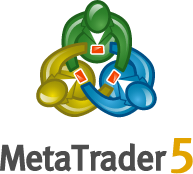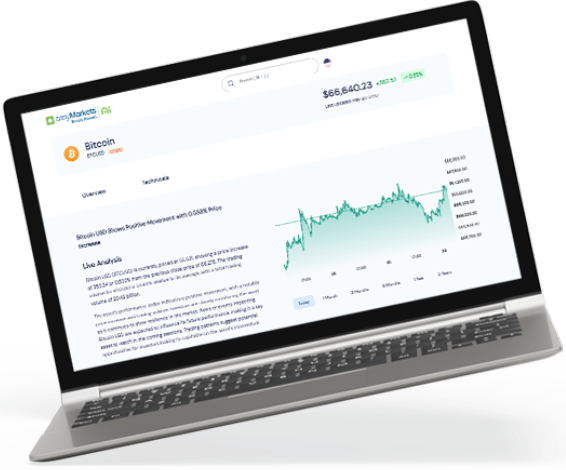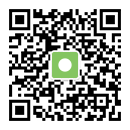Avoiding Trader Burnout: Information Overload & Market Volatility

If you’re feeling overwhelmed, you’re not alone. Ever since the US President took office for the second time on 20th January, traders are caught in a relentless storm of news. Each day brings another market-shaking moment: some crucial, others just noise. From the introduction of $Melania and $Trump crypto coins, to the seismic shifts in the economy caused by Reciprocal Tariffs and the global trade war, it’s exhausting to keep up.
In addition to being incredibly frustrating, this information overload is a real risk to traders’ mental well-being and financial perspective. In this latest Victory Vanguard, we’ll explore how you can filter out the noise, stay focused on what truly matters, and protect yourself from Burnout in today’s chaotic markets.
What is burnout in trading?
As extreme as it may sound, trading is a mental, emotional, and strategic battle. And like any battle, if you push too hard without rest, fatigue becomes inevitable.
Trader Burnout is a state of deep exhaustion that:
Drains your focus
Erodes your decision-making skills
Leaves you questioning your passion for trading
This psychological state builds up over time through endless hours of analysis and constant market volatility, undoubtedly impacting your trades. Left unchecked, Trader fatigue could even spill into your personal life, affecting your relationships, health, and overall well-being.
But trading Champions don’t quit when things get tough. Before it even hits, understanding Trader Burnout and its causes is the first step in preventing it - and staying in the game for the long run.
Navigating the market
The early 2025 information overload is overwhelming. A mix of trivial and high-stake events continue to trigger market volatility. From a crypto national reserve to tariffs on penguins, information overload bombards the public daily. Under the second Trump administration, the public is bombarded with constant updates. The sheer saturation of news leaves many traders unsure of where to focus, combing through a sea of news pieces to find what truly will have an impact.
Timeline of 2025’s information overload
In noisy markets, clarity is your greatest asset. Below are key events that shaped 2025’s Q1:
January
17th January: Donald Trump launched $TRUMP coin, a Solana-based meme token that soared past a $27 billion market cap before dropping 50% by 19th January to around $38 per token.
19th January: Melania Trump similarly launched her own coin.
20th January: President Trump signed an executive order withdrawing the US from the Paris Agreement, disrupting ESG-aligned portfolios.
March
3rd March: An executive order established a strategic reserve for cryptocurrencies including Bitcoin, Ethereum, Solana, XRP, and Cardano.
4th March: 25% tariff on imports from Canada and Mexico announced, escalating trade tensions.
Ongoing news topics
What’s most exhausting about the 2025 information overload are not the done and dusted drivers of market volatility. It’s the ongoing, indefinite developments.
Since 4th February: Suggestions of a US takeover of the Gaza Strip has caused 1.5% to 3.5% dips in defence stocks like Lockheed Martin (LMT), Northrop Grumman (NOC), Boeing (BA), General Dynamics (GD), and RTX Corporation (RTX). Depending on how this topic evolves throughout the year, the markets will react accordingly with every development.
2nd April: New tariff announcements were announced on what was termed as ‘Liberation Day’, with a 10% baseline universal tariff on all imported goods (excluding Canada and Mexico). Additional tariffs reached a maximum of 49% in Cambodia, and all accumulated tariffs on China reached a maximum of 54%.
Market reaction to media saturation
Markets responded quickly to major announcements:
The executive order on cryptocurrency reserves caused up to 10% intraday gains in assets like XRP, Solana, and Cardano on 2nd March.
The 4th March tariffs on Canadian and Mexican imports led the London Metal Exchange (LME) Aluminium 3-Month Futures to spike up by 3.24% to $2,709 per metric ton on 6th March.
As the media flood grows, traders must navigate information overload that can trigger swift market volatility.
Mastering the behaviour
Trader Burnout thrives in silence. But awareness is your first defence. By identifying the signs early, traders can reset and build resilience.
There are three major symptoms:
Emotional exhaustion
Chronic stress
Cognitive information overload (taking in more than your brain can handle)
Over time, what once felt purposeful becomes draining. You may find yourself taking uncharacteristic risks, reacting impulsively, or doubting your abilities. This mental fog clouds judgment, making it harder to stick to a strategy, recognize market volatility signals, or stay disciplined.
This is in line with what many traders are currently experiencing.
Example of burnout in trading during the 2025 information overload
Indeed, by April 2025, signs of Burnout appear to be affecting notable numbers of traders, as they navigate constant market updates and heightened volatility. Emotional exhaustion is peaking as many scramble to react to a torrent of information overload.
Markets are moving faster than the mind
With every Executive Order seemingly sending entire sectors whipsawing, Chronic Stress is taking hold. Traders are finding themselves waking up to swings in various markets, collapsing portfolios, and seismic tariff shocks.
Fatigue over fundamentals
In addition to intense market volatility, many traders are showing signs of mental and emotional ‘wear and tear’. Cognitive Overload has now become the norm. With dozens of signals competing for attention, focus is fragmenting. Important data is blurring with noise. Many traders are missing key moves, not from lack of knowledge, but from sheer fatigue.
But whilst overwhelming, this phenomenon is nothing new.
CASE STUDY: The 2020 Stock Market Crash
If current market volatility feels overwhelming, know this: we’ve navigated worse.
Let’s revisit one of the most chaotic times in modern financial history: 24th February to 23rd March 2020.
COVID-19 had just gone global. There were no vaccines, no clear economic plan, and very little understanding of what was coming. What followed was a sustained, relentless flood of information overload: rising infection rates, emergency lockdowns, and mounting economic shutdowns.
Markets reeled under the weight of constant uncertainty.
The timeline of 2020 market volatility chaos

• 25th February: Oil hit a one-year low of $49.78 per barrel
Treasury yields dropped to record-breaking lows (1.31% for the 10-year note, 1.80% for the 30-year bond)
• 27th February: The DOW plunged 1,191 points, its largest one-day point drop at the time.
• 28th February: Global indices posted their worst weekly losses since the financial crisis, with the DIJA falling by 12.4%, the S&P 500 declining by 11.5%, and the FTSE 100 Index dropping by 11.1%.
• 9th March: A 2,014-point DOW crash
• 12th March: The DOW fell another 2,352 points
• 16th March: A shocking 2,997-point DOW drop, now the largest in US market history.
And it wasn’t just equities.
WTI crude oil futures cratered, dropping 305% from $18 per barrel on 17th April to - $37.63 on 20th April. The 10-year US treasury yield fell below 1% for the first time, closing at 0.918% on 3rd March, and continued to decline, reaching an all-time intraday low of 0.318%. Even traditional safe havens like Gold faltered under pressure, dropping to a three-month low of $1,469 per ounce on 16th March.
The NYSE and NASDAQ triggered circuit breakers (automatic market pauses to stop panic selling) four times in just two weeks on the 9th, 12th, 16th and 18th March 2020. Sectors like travel and energy collapsed. The typical investor’s portfolio declined by an average of 16% from 9th to the 20th March.
The psychological toll
Traders were operating in survival mode. Veteran investors found that historical patterns offered little guidance. For newer traders (many of whom had only known the post-2008 bull run) the sheer velocity of losses was paralyzing.
There was no clear path forward. No playbook. No predictability. Just a non-stop stream of breaking news:
- Infection curves
- Jobless spikes
- Stimulus announcements
- Supply chain failures
Every headline carried the potential for market volatility.
From 12th February to 23rd March, the DOW lost 37% of its value, the fastest descent into a period of intense bear market volatility ever recorded.
It was, quite simply, a perfect storm of data, volatility, and human stress.
Conquering the cognitive
When you’re juggling volatile markets, constant news, and endless information overload, your brain is working overtime. This is Cognitive Overload, a psychological process that majorly drives Trader fatigue.
But to understand Cognitive Overload, we must first grasp Cognitive Load Theory.
Defining cognitive load theory
This theory reminds us that the brain’s ‘working memory’ can only hold a limited number of ideas at once, usually 5 to 9 chunks.
The Cognitive Load Theory refers to the amount of mental effort as ‘Loads’, and breaks them down into three key types:
Intrinsic Load: The natural mental effort based on the natural difficulty of.
Germane Load: The effort that builds knowledge structures for long-term understanding.
Extraneous Load: The extra stress caused by distractions.
In trading, Cognitive Overload occurs when the demands of the market push these mental capacities beyond their limits.
The solution? Cognitive Load Management.
Applying cognitive load management to avoid Burnout
In any scenario, we must always be in control of our mind. The brain is a powerful tool, but only when used correctly. Here’s how you can do that:
Minimise your extraneous load
In any scenario, your extraneous load should be eliminated. Especially when faced with current market volatility.
Distractions are everywhere. Constant updates and market volatility can quickly overwhelm your mind. When market volatility is as relentless as it is now, it's easy to feel pulled in every direction.
But the key to navigating this complexity is limiting your exposure to distractions. Instead of getting bogged down by every headline, prioritise what directly affects your trades.
Focus only on what’s relevant to reduce your mental fatigue.
Increase your germane load
Once you focus on these true drivers of market volatility, direct this mental energy exclusively towards them, diving deep into researching these key factors.
But don’t just focus on the drivers of market volatility – take those extra steps to demo-trade, engage in market volatility crash simulations, and back test your theories to historical data.
Manage your intrinsic load
Optimise how much effort you need to invest in a particular task. When it comes to trading, you can do so by:
Monitoring key sources early.
When a news story breaks, skim for the essential details. Gather necessary background knowledge so you don’t need to dive deep every time a new update surfaces. But remember to minimize your extraneous load by focusing solely on stories that will undeniably result in market volatility and influence your trades.
Set up Google Alerts for market-moving events.
Set alerts for stories that are likely to have a significant market impact. This way, you’re only diving deep when something truly moves the market, saving your mental energy for the big stories.
Review the story’s impact on your trades.
After learning about a major story, assess how it affects your open positions or trading strategy. This way, your Intrinsic Load becomes focused on the aspect of the news story that truly affects you most: how it impacts your trades.
Winning wisdom wrap up
Trader Burnout is a tough challenge, but with the right approach to managing Cognitive Load, you can safeguard your focus, energy, and resilience.
During the current information overload, it’s essential to:
Filter distractions
Focus on what moves your trades
Direct your attention towards deeper understanding
Success isn’t reacting to the latest headline - it’s strategically controlling how you process information, staying clear-headed, and making informed decisions.
Balance mindfulness, focus, and discipline, to protect yourself from Burnout, but also position yourself to thrive.
Final thoughts
So, will the information overload slow down in 2025? Unlikely. Bold announcements are often reversed.
Take Trump’s postponed tariffs on Canada and Mexico. Originally set for 4th March, they were delayed until 2nd April—and later softened.
The information overload will keep coming. But how you handle them? That’s your edge.
Control how you process the noise. Stay steady. Stay sharp. Because no storm of information overload can shake a focused trader.
Disclaimer:
Please note that the information provided in this article was accurate at the time of writing. Market conditions and economic data can change rapidly. This content is intended for informational purposes only and should not be used as the sole basis for making financial decisions.

If you’re feeling overwhelmed, you’re not alone. Ever since the US President took office for the second time on 20th January, traders are caught in a relentless storm of news. Each day brings another market-shaking moment: some crucial, others just noise. From the introduction of $Melania and $Trump crypto coins, to the seismic shifts in the economy caused by Reciprocal Tariffs and the global trade war, it’s exhausting to keep up.
In addition to being incredibly frustrating, this information overload is a real risk to traders’ mental well-being and financial perspective. In this latest Victory Vanguard, we’ll explore how you can filter out the noise, stay focused on what truly matters, and protect yourself from Burnout in today’s chaotic markets.
























